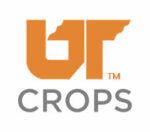Relationship between Mehlich 1 and 3 Soil Tests for West Tennessee Soils
Research Funded by the Tennessee Soybean Promotion Board
Nutifafa Adotey, Assistant Professor and Soil and Nutrient Specialist, Sydney Logwood, Graduate Student, Lori Duncan, Assistant Professor and Row Crop Sustainability Specialist, Robert Florence, Director, Soil, Plant and Pest Center, and Ryan Blair, Extension Area Specialist III and County Standardized Trials Specialist
Introduction
Most of the commercial and state soil testing laboratories in and around Tennessee use and prescribe fertilizer recommendations based on Mehlich 3 soil test extraction method. Most growers may receive soil test results from laboratories that utilizes Mehlich 3 soil test extraction method. However, The University of Tennessee gives fertilizer recommendations based on the Mehlich 1 extractant. This makes it difficult for growers to take advantage of The University of Tennessee fertilizer recommendations. Currently, the Mehlich 1 and 3 conversion equations used in TN were derived from the University of Kentucky, which were based on Kentucky soils (Table 1).
Conversion equations between Mehlich 1 and 3 for West Tennessee soils allows producers to use the fertilizer recommendations from The University of Tennessee even if they send their samples to a lab using Mehlich 3. This article provides information on the relationship between Mehlich 1 and 3 soil tests (phosphorus) P and (potassium) K for West Tennessee soils.
Materials and Method
To evaluate the relationship between the extractants, we collected and analyzed over 600 soil samples (sampled to a depth of 6 inches) for soil pH, Mehlich 1, and Mehlich 3 extractable elements. The number of soils used for the P and K conversion equations were 625 and 608, respectively.
Results and Discussion
Conversion is based on a pound per acre basis. If the soil test result is reported in ppm, values must be converted to pounds per acre. For phosphorus, 2 conversion equations were generated since the conversion factor between Mehlich 1 and 3 for soils with pH <6 was different than for soils with a pH >6. To convert Mehlich 3 P to Mehlich 1 P, for soils with < pH 6.0, divide Mehlich 3 P by 1.97 and for soils with pH >= 6.0, divide Mehlich 3 P by 1.52. It is important to pay close attention to soil pH which will determine your soil test level and recommended fertilizer application rate. The newly generated soil test calibrations for Mehlich 3 Extractable Phosphorus and Potassium in West Tennessee are shown in table 2 and 3. To convert Mehlich 3 K to Mehlich 1 K, subtract 27 from Mehlich 3 K, then divide the resultant value by 1.53. There was a substantial difference between the previous and newly generated conversion equations for potassium for West Tennessee soils. For example: A Mehlich 3K soil test value of 150 pounds per acre will fall within the medium soil test level using previous conversion equation (Table 1) but will be in the low soil test level with the new conversion equations (Table 2 or 3).



Further reading
Duncan, L., Joines, D. and H. Savoy. UT Fertility Recommendations for Tennessee Row Crops. SP 763. SP763.pdf (tennessee.edu)
Savoy Hubert. Interpreting Mehlich 1 and 3 Soil Test extractant results for P and K in Tennessee, Extension Publication, W229. Interpreting Mehlich 1 and 3 Soil Test Extractant Results for P and K in Tennessee
Mehlich, A. (1984) Mehlich 3 soil test extractant: A modification of Mehlich 2 extractant, Communications in Soil Science and Plant Analysis, 15:12, 1409-1416, DOI: 10.1080/00103628409367568
SERA-IEG-6. Conversion equations for soil test extractant: Mehlich 1 and Mehlich 3. Southern Regional factsheet. https://aesl.ces.uga.edu/sera6/FACT/SERA-6-FS-5.pdf





